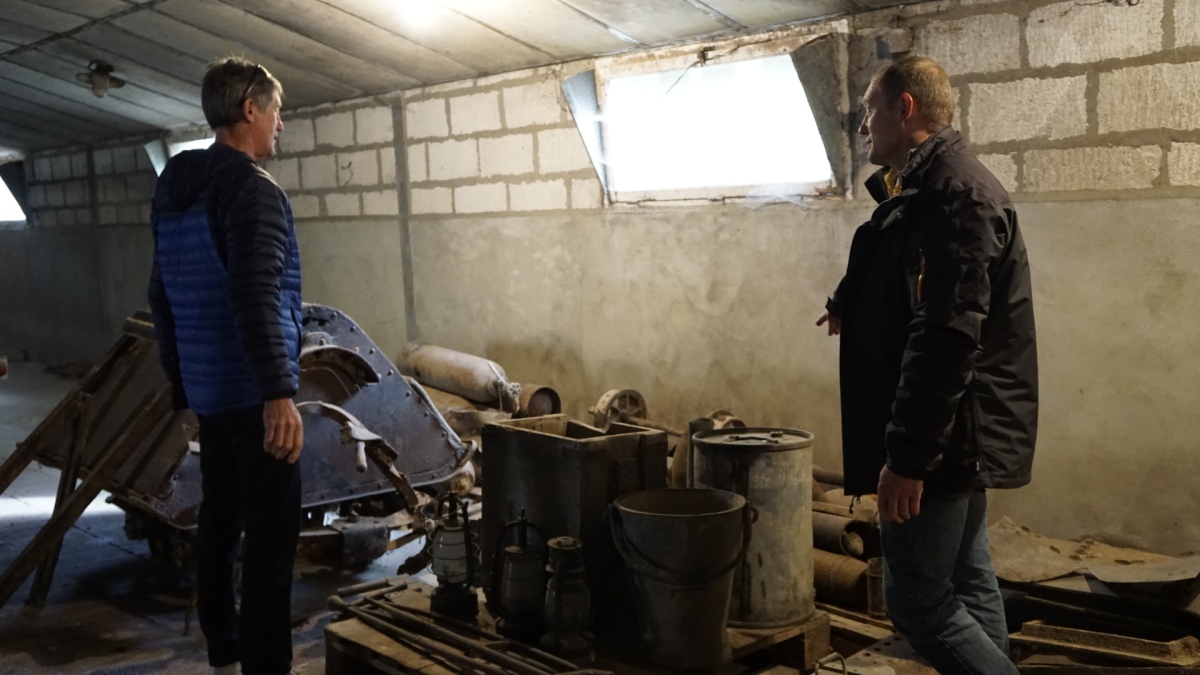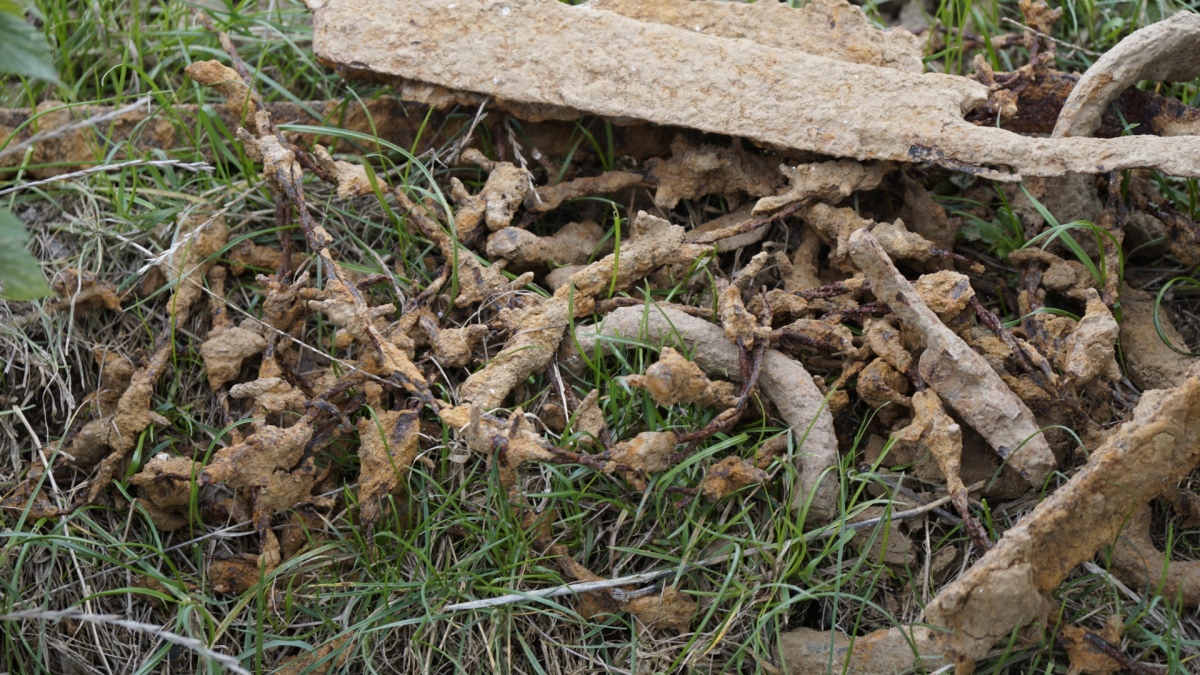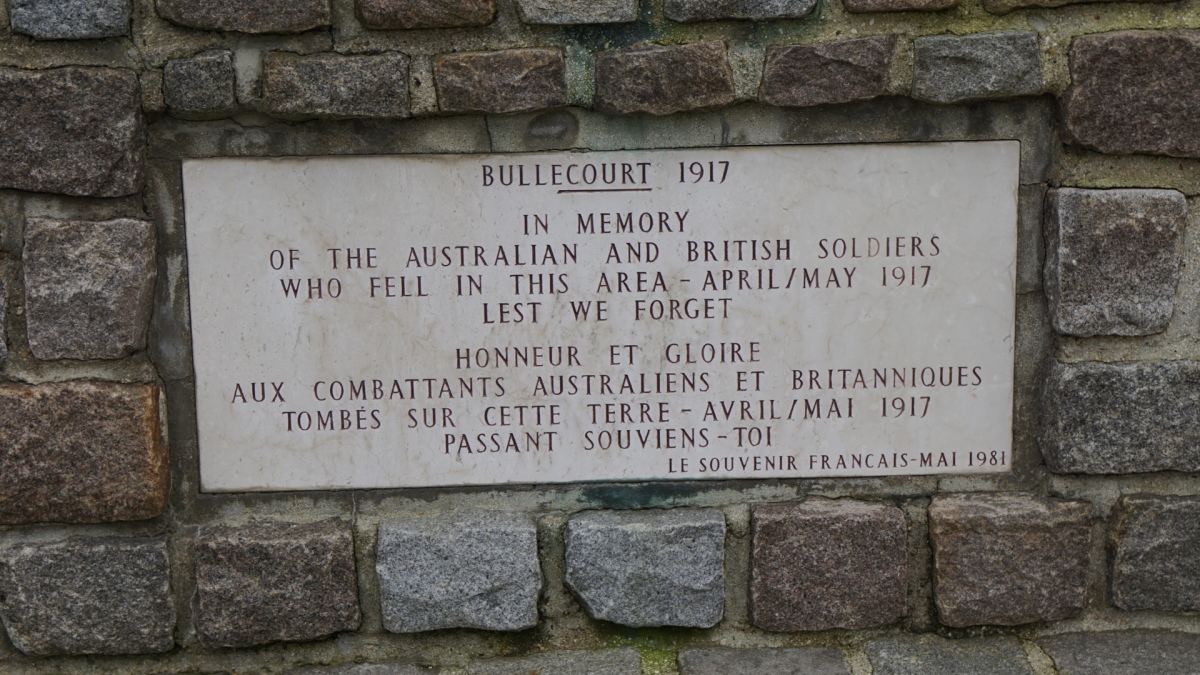Today is a ‘big’ day in our itinerary as we follow in the footsteps of my grandfather, Private Charles William Palmer, 48th Battalion A.I.F. and prisoner-of-war in World War 1. My husband and I are taking three weeks to visit all the sites mentioned in Charles’s war diaries. If you wish to start the story from the beginning please go to What is this Blog?
In my blog posts to date, we have followed Charles from his arrival in France at Boulogne on 13 March 1917, to the military camp at Étaples, across to Albert by train, marching on to Bapaume and into battle on 10 April 1917 in the aborted attempt at Bullecourt to breach the Hindenburg Line. We now visit Bullecourt to discover what happened on 11 April 1917.
Then…
In Charles’s words, recorded in his diary:
“Fell in about 3am in Battle order (Snowing) when we marched off to the same positions as the morning previous having this time the assistant [sic] of some tanks not so many as we should have had owing to the Drivers not being competent to do their duty … . It being almost break of day when we where [sic] ordered to move off, the 46th Batt to take his first line the 48th to take his second, having no assistance from our Artillery & not much from the tanks we was [sic] at a terrible disadvantage. The machine gun fire of Fritz was, so some of the old hands have told me since, the heaviest they have been through, our men where [sic] simply mowed down, how any at all reached the trenches was simply mavellous [sic] luck, the few who did very soon got to work and gave the Hun’s a warm time of it. Then our bombs gave out and other ammunition run short the Hun’s came again & gave us a very rough time of it. One of our Officer’s then told us that we could not hold on. The order was given to try & get back to our lines. Most of our men did not get the Order, so where [sic] left behind mostly killed or wounded by our own fire for it simply mowed our men down. Myself & four other [sic] (3 being wounded) where [sic] in such a position when our guns started that we did not dare bob up as the shells where [sic] bursting every point around us smothering us with dirt, when the firing ceased there was a lull for a while, when I bound up my three wounded comrades, then we heard Fritz’s voice singing for the men to come out having overlooked us we thought we would have a chance when darkness fell to get to our lines. But unfortunately after we first heard his voice, which was a couple of hours before, one of the wounded kept calling for help which in the end brought Fritz who very soon had us out…”
Charles William Palmer was now a captive of the German Army.
This Battle saw the highest number of Australian prisoners taken in any one action in the war – 1,170. The same Battle injured or claimed the lives of almost 3,500 men. There has been much written about this Battle, so fuller accounts can easily be found online. Most concur that the action was a debacle; a lesson in how NOT to plan an attack.
And now…
Having read my grandfather’s account of his capture many times and also the official documents detailing the First Battle of Bullecourt I knew that the day we actually visited Bullecourt would be an emotional one, but it exceeded all expectations.
When we arrived in the town we parked at the church as directed to do so by the guidebook I had bought. After photographing the ‘slouch hat’ memorial at the church we endeavoured to follow the book’s directions for a walk of the battlefield. It quickly became obvious that this was not as easy as it sounded. As I paused to take a photograph a man called out ‘bonjour’ and approached me. His English was moderately good and certainly better than my French! After introductions and an explanation of our quest he invited us to view a range of war-related artefacts he had found in the fields of his farm. In his barn, which was near the church, there were many unexploded mortars, parts of machine guns, cart wheels, tank tracks, etc.


Trevor with Eric and the collection of WW1 artefacts found on his farm.
Eric generously offered to take us around the Bullecourt battlefields which we gratefully accepted. We agreed to meet up 20 minutes later at the church only to find that he had arranged, instead, for another man, Yves Fohlen to give us a personal tour. We were overwhelmed by their generosity. In their view the debt to Australians was so great that it could never be sufficiently repaid – helping us was a small thing they could do. Yves turned out to be a noted battlefield historian who had worked on a book about Bullecourt – a book I had purchased before our trip!
The “battlefields” are all still there – open, farmed fields with minimal undulations in the land. Yves drove us to various vantage points on both the German and British sides of the line pointing out the locations of the trenches (OG1 and OG2) and the ludicrous nature of sending men into an exposed valley overlooked on three sides by German artillery and infantry. He and Eric had just been to a meeting with an Australian Embassy representative to plan next year’s battle commemorations so he had his file of maps and notes with him. To be shown the area of land where my grandfather had left the trenches (gone over the top) with his Battalion into ‘hell’; deafened by artillery and mortar fire; the smell of war in his nostrils; mates mown down by gunfire and flying shrapnel at every step, was overwhelming. More so by the fact that, in stark contrast to the searing cold, snow and noise experienced by Charles and his mates, we were walking the fields in sunshine and peaceful, rural silence.
 The Battlefield.
The Battlefield.
 Understanding the German view of the Battlefield with Yves.
Understanding the German view of the Battlefield with Yves.
 These two trees mark the positions of the two German trenches, OG1 and OG2.
These two trees mark the positions of the two German trenches, OG1 and OG2.

 Shrapnel and barbed wire still litter the fields.
Shrapnel and barbed wire still litter the fields.
My gratitude for this chance meeting with Eric and Yves and for their generosity in giving us their time and knowledge is immense. They turned a special day into a truly moving and memorable one. My thanks to them both.
We finished our day in Bullecourt with a few hours at the excellent ‘Bullecourt 1917 Museum Jean & Denise Letaille’. Developed through the passion of this couple for preserving the artefacts and memories of the War, this private museum was gifted to the local community and substantially upgraded, re-opening in 2012.
This day was definitely the highlight of our trip; a day I felt close to the grandfather I only knew for the first six years of my life; a day that finished with feelings of awe and admiration for how much he, and all these men went through, whether they died on the battlefield or cheated death and managed to return home.



Related links:
Australian War Memorial. Battle of Bullecourt
https://www.awm.gov.au/military-event/E110/
* In the quotes I have used from Charles’s diary I use [sic] to indicate when an error in the text is part of the original, rather than typographical.
– All photos were taken on 27 October 2016 –

A few tears reading this page this morning …
LikeLike
Hi Lesley. I’m so glad you are enjoying sharing these experiences with us. It’s a very emotional journey, and beyond comprehension what these men went through.
Kaye xx
LikeLike
Thank you Kaye for bringing us along on your journey. What a memorable day for you and Trevor and what luck to have such an authority on the battle as your guide. Leanne and Alan
LikeLike
Hi to you both! Thanks for taking the time to read my post. It has been an amazing trip and this part has been very emotional.
Kaye xx
LikeLike
Kaye, What is the name of the book written by Yves?
Paul Cooper
Grandson of Pte Patrick Boyle 5340
LikeLike